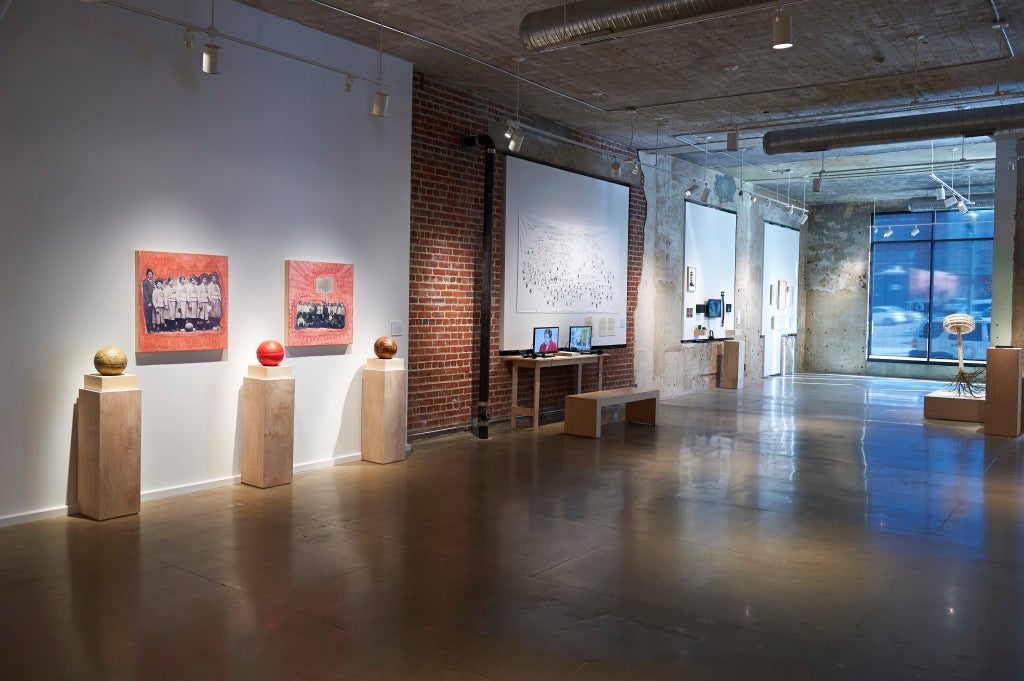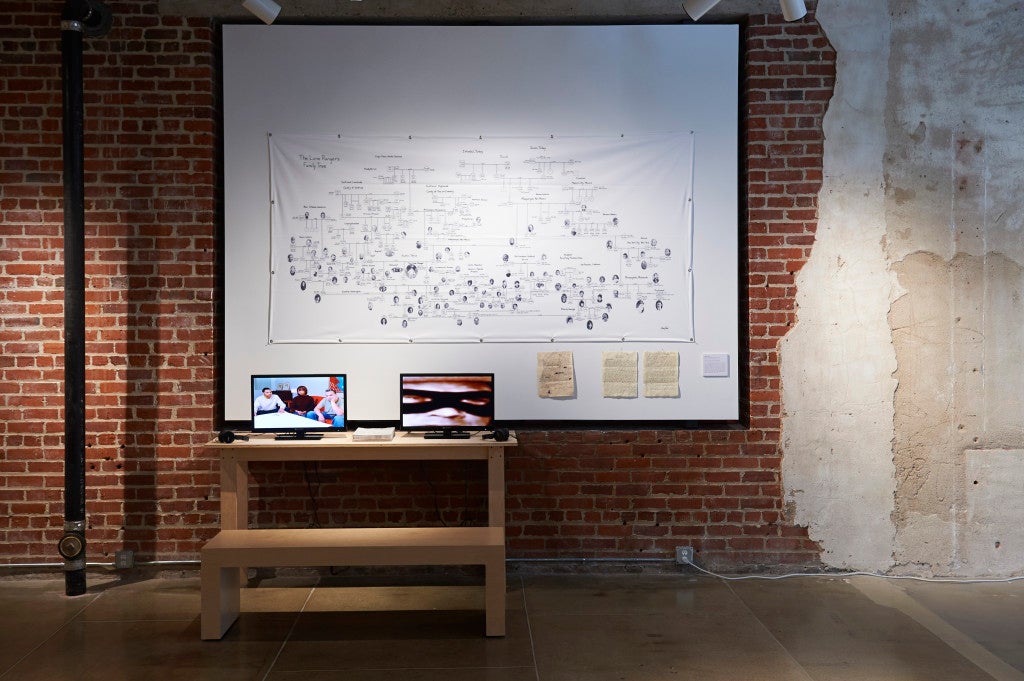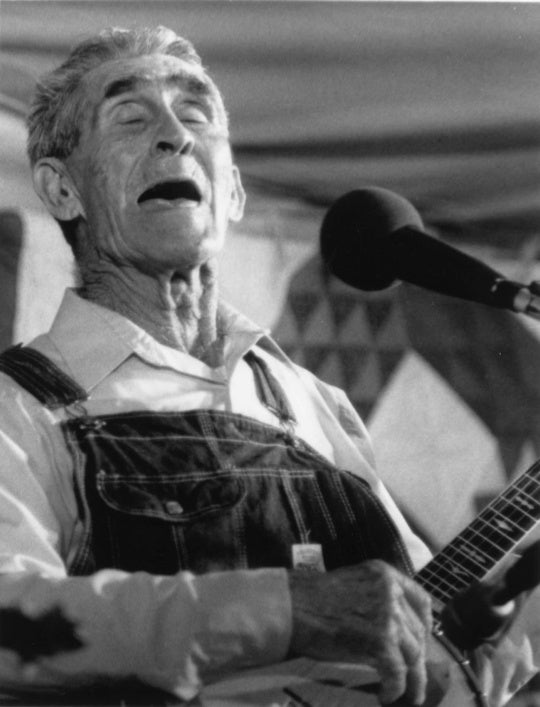
“Loving After Lifetimes of All This,” an exhibition at the Center for Craft, Creativity & Design in Asheville, North Carolina, includes works by a dozen artists and cooperatives that straddle the lines between contemporary fine art installation, craft, and social practice work. The show’s enigmatic title reflects its themes, which explore the intersection of self-care, survival, and apprenticeship within the creative practices found in historically disadvantaged populations.
The dynamic and diverse works on view incorporate weaving, quilting, ceramics, and woodworking combined with video, photography, archival materials, and performance, creating hybrid expressions that intertwine the historical and the contemporary. Curated by Danny Orendorff, curator-in-residence and interim programs director at Charlotte Street Foundation in Kansas City, Missouri, Loving‘s participating artists include Gina Adams, Tanya Aguiñiga, Natalie M. Ball, Jonathan D. Barnett, NedRa Bonds, Sonya Clark, matthew Dehaemers, Christopher Leitch, Judith G. Levy, Ramekon O’Arwisters, Tina Takemoto, and Temporary Services.
Takemoto’s installation of cut paper, carved wood, paint, and video features a number of individual works that combine to illuminate the artist’s archival research into the life of Jiro Onuma, a homosexual Japanese-American who employed a number of survival strategies to cope with his day-to-day incarceration in a World War II internment camp in Utah.
Onuma admired the muscular men pictured in bodybuilding magazines, such as Physical Culture Magazine. Using only simple materials like wood , paper, and lemon juice that might have been available to those in the camps Takemoto has recreated exercise equipment and even the homoerotic imagery from the magazines in the form of images realized in “invisible ink” and revealed with a candle’s flame.

The highlight of Takemoto’s installation is the video Looking for Jiro, which features the artist in a baker’s outfit similar to the one Onuma may have worn while working in the camp’s kitchen. Footage of Takemoto dancing and lip-synching to a cover of Madonna’s “Hung Up” is intercut with vintage footage of midcentury musclemen and official U.S. propaganda films about the camps. The overall effect is a loving and joyous celebration of personal expression in an environment defined by hardship and injustice.
In a show packed with strong work, the other highlight for me was Judith G. Levy’s series The Last Descendants, which presents made-up archival research of fictional characters, demonstrating the dynamic relationship between historical facts and legendary truths, which necessarily combine and clash in all examinations of the obscured and vanished stories that tell the tales of long-ago lives.
In Last Descendants: Huckleberry Finn and Last Descendants: The Lone Ranger, Levy presents elaborate family trees and video interviews with contemporary “descendants” of these literary heroes, illuminating their book-bound legends while raising new questions from a contemporary perspective: Was Huckleberry Finn really the son of a slave? What was the Ranger really hiding behind that iconic black mask?

The show is dominated by textile works—most involving cooperative communities, demonstrating how traditional work leads to a sharing of values across generational, racial, and class boundaries.
Temporary Services’s installation is the exhibition’s most unique, and it’s placement near the gallery’s front door invites viewers to literally reach out and touch it. Temporary Services is a Situationist-inspired art collective whose well known Library Project is a selection of 100 artist’s books surreptitiously added to the collection of the Harold Washington Library Center in Chicago. A smaller display of books at the CCCD in Asheville are hung from the ceiling with monofilament—viewers are encouraged to wander into the literary mobile and flip through the books’ contents. Iithe perfect way to wade into the rest of this layered and thoughtful exhibition.
“Loving After Lifetimes of All This” is on view at the Center for Craft, Creativity & Design in Asheville, North Carolina, through May 23.
Joe Nolan is a critic, columnist, and intermedia artist in Nashville. Find out more about his projects at www.joenolan.com





